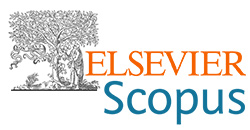Blend of low cost electrode material for energy storage device under DC glow discharge plasma exposed ESAC
DOI:
https://doi.org/10.62638/ZasMat1123Abstract
The waste biomass in the form of eucalyptus globulus seeds activated carbon, which is employed as the electrode material and is environmentally acceptable, provides the good specific capacitance in the current work which is used for the energy storage application. A sample carbonization and physical activation procedure was used to create the activated carbon from the eucalyptus seeds. As prepared activated carbon was exposed to a DC glow discharge plasma, which modifies the surface of the material without altering its core characteristics. The investigation of the activated carbon was done utilizing structural, morphological, and electrochemical techniques of both pure and plasma treated. The increasing intensity of the X-ray diffraction indicates the carbon's amorphous and disorderly character. More oxygen-containing functional groups are present, according to an FTIR analysis. The FESEM/EDAX investigation has demonstrated the less appearance and more graphitic porosity with random orientation. Moreover, the electrochemical investigations were examined for utilization of the material of Electrochemical Impedance Spectroscopy (EIS) and Galvanostatic charge-discharge (GCD) which has a specific capacitance of 150F/g for a 1.5mA/g current density. The results revealed that the activated carbon made from Eucalyptus seeds after plasma treatment has good surface characteristics, improved specific capacitance, and is a low-cost electrode material for fabrication of energy storage device.
Keywords:
Eucalyptus seeds,, activated carbon, plasma treatment , surface modification, specific capacitanceReferences
R.Thangavel, A.G.Kannan, R.Ponraj, V.Thangavel, D. W. Kim, Y. S. Lee (2018) High-energy green supercapacitor driven by ionic liquid electrolytes as an ultra-high stable next-generation energy storage device, J. Power Sources, 383, 102-109.
https://doi.org/10.1016/j.jpowsour.2018.02.037
G.S.Dos Reis, S.H.Larsson, H.P. de Oliveira, M. Thyrel, E. C. Lima.(2020) Sustainable biomass activated carbons as electrodes for battery and supercapacitors-a mini-review, Nanomaterials, 10(7), 1-22.
https://doi.org/10.3390/nano10071398
S.P.Chand, A.Joshi (2021) Biomass derived carbon for supercapacitor applications: Review. J. Energy Storage, 39, 102646.
https://doi.org/10.1016/j.est.2021.102646
A.Pistone, C.Espro (2020) Current trends on turning biomass wastes into carbon materials for electrochemical sensing and rechargeable battery applications Curr. Opin. Green Sustain. Chem., 26, 100374.
https://doi.org/10.1016/j.cogsc.2020.100374
R.K.Gupta, M.Dubey, P.Kharel, Z.Gu, Q.H.Fan (2015) Biochar activated by oxygen plasma for supercapacitors, J. Power Sources, 274, 1300-1305.
https://doi.org/10.1016/j.jpowsour.2014.10.169
C.Saka (2018) Overview on the Surface Functionalization Mechanism and Determination of Surface Functional Groups of Plasma Treated Carbon Nanotubes, Crit. Rev. Anal. Chem., 48(1), 1-14.
https://doi.org/10.1080/10408347.2017.1356699
R.Wolf, A.C.Sparavigna (2010) Role of Plasma Surface Treatments on Wetting and Adhesion, Engineering, 02(06), 397-402.
https://doi.org/10.4236/eng.2010.26052
W.M.Chang, C.C.Wang, C.Y.Chen (2015) Plasma Treatment of Carbon Nanotubes Applied to Improve the High Performance of Carbon Nanofiber Supercapacitors, Electrochim. Acta, 186, 530-541.
https://doi.org/10.1016/j.electacta.2015.11.038
C.Grima-Olmedo, R.Gómez, D.Gómez-Limón, C. Clemente-Jul (2016) Activated carbon from flash pyrolysis of eucalyptus residue, Heliyon, 2(9), 1-18.
https://doi.org/10.1016/j.heliyon.2016.e00155
S.J.Rajasekaran, V.Raghavan (2020) Facile synthesis of activated carbon derived from Eucalyptus globulus seed as efficient electrode material for supercapacitors, Diam. Relat. Mater., 109, 108038.
https://doi.org/10.1016/j.diamond.2020.108038
K.A.Vijayalakshmi, K.Vignesh, N.Karthikeyan. (2015) Synthesis and surface characterization of bamboo charcoal carbon using low temperature plasma treatment, Mater. Technol., 30(A2), A99-A103.
https://doi.org/10.1179/17535557A15Y.000000005
S.Mopoung, N.Dejang (2021) Activated carbon preparation from eucalyptus wood chips using continuous carbonization-steam activation process in a batch intermittent rotary kiln, Sci. Rep., 11(1),1-9.
https://doi.org/10.1038/s41598-021-93249-x
S.Saveetha, K.A.Vijayalakshmi (2021) Influence of Low temperature Plasma on activated bamboo charcoal employed in energy storage system, 16(1001), 12-22.
D. Jain, J. Kanungo, S. K. Tripathi (2020) Enhancement in performance of supercapacitor using eucalyptus leaves derived activated carbon electrode with CH3COONa and HQ electrolytes: A step towards environment benign supercapacitor, J. Alloys Compd., 832, 154956.
https://doi.org/10.1016/j.jallcom.2020.154956
E.Adhamash et al. (2020) High-energy plasma activation of renewable carbon for enhanced capacitive performance of supercapacitor electrode, Electrochim. Acta, 362, 1-9.
https://doi.org/10.1016/j.electacta.2020.137148
Y.Wen, L.Chi, K.Wenelska, X.Wen, X.Chen, E. Mijowska (2020) Eucalyptus derived heteroatom-doped hierarchical porous carbons as electrode materials in supercapacitors, Sci. Rep., 10(1),1-12.







